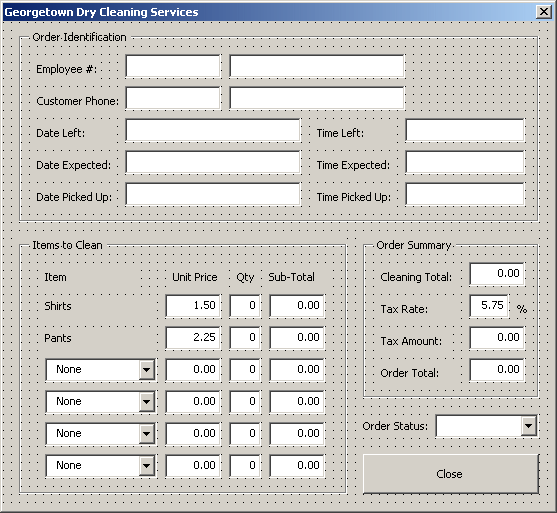|
|
While most objects only provide characteristics to
describe them, other objects can perform actions. For example, a house can
be used to protect people when it is raining outside. In computer
programming, an action that an object can perform is referred to as
method.
|
Earlier, we defined a House class with its
properties. Unlike a property, a method must display parentheses on
this right side to differentiate it from a property. An example would be:
House
[
Address
TypeOfHouse
NumberOfBedrooms
NumberOfBathrooms
HasIndoorGarage
LivingRoomCoveredWithCarpet
KitchenHasIslandStove
ProtectFromOutside()
]
When an object has a method, to access that method, type the name of the object,
followed by a period, followed by the name of the method, and followed by
parentheses. For example, if you have a House object named Langston and you want
to ask it to protect its inside from outside rain, you would type:
Langston.ProtectFromOutside()
This is also referred to as calling a method.
|
 Practical Learning: Introducing
Objects Practical Learning: Introducing
Objects
|
|
- Start Microsoft Excel
- From the resources that accompany these lessons, open the gdcs1
project
- To open Microsoft Visual Basic, on the Ribbon, click Developer and,
in the Code section, click Visual Basic:

- Right-click the form and click View Code
|
Methods and their Arguments
|
|
When asked to perform an action, a method may need one or more values to work with. If a
method needs a value, such a value is called an argument. While a certain method
may need one argument, another method would need more than one. The number of arguments of a
method depends on its goal.
The arguments of a method are provided in parentheses.
Suppose you have a House object and you want it to protect what is inside. There
may be different reasons why the inside needs to be protected: may be from the
rain, may be from the windy dust, may be at night time from too much light that
prevents from sleeping, etc. Based on this, you may have to provide additional
information to indicate why or how the inside should be protected. For this
reason, when such a method is called, this additional information must be
provided, in the parentheses of the method. Here is an example:
House
[
Address
TypeOfHouse
NumberOfBedrooms
NumberOfBathrooms
HasIndoorGarage
LivingRoomCoveredWithCarpet
KitchenHasIslandStove
ProtectFromOutside(Reason)
]
As mentioned above, a method can be created to take more than one argument. In
this case, the arguments are separated with commas. Here is an example:
House
[
Address
TypeOfHouse
NumberOfBedrooms
NumberOfBathrooms
HasIndoorGarage
LivingRoomCoveredWithCarpet
KitchenHasIslandStove
ProtectFromOutside(Reason, WhenToProtect)
]
The arguments are used to assist the object with
performing the intended action.
Once a method has been created, it can be used. Once again, using a method is referred to as calling it. If a
method takes one argument, when calling it, you must provide a value for the argument, otherwise the
method would not work.
To call a method that takes an argument, type the name of the method followed by the opening parenthesis “(“, followed by the value
that will be the argument, followed by a closing parenthesis “)”. The argument you pass can be a regular constant value or it can be the name of
another object.
If the method is taking more than one argument, to call it, type the values for the arguments, in the exact order indicated, separated from each other by a comma.
We have mentioned that, when calling a method that
takes an argument, you must supply a value for the argument. There is an
exception. Depending on how the method was created, it may be configured
to use its own value if you fail, forget, or choose not, to provide one.
This is known as the default argument. Not all methods follow this rule.
If a method that takes one argument has a default value for it, then you
don't have to supply a value when calling that method. Such an argument is
considered optional.
If a method takes more than one argument, some argument(s) may have
default values while some others do not. The arguments that have default
values can be used and you don't have to supply them.
We will mention default arguments when we come to a
method that takes some.
|
Controls' Methods: Giving Focus
|
|
On a form that has many controls, at one particular
time, only one control
can receive input from the user. The control that is currently receiving
input or actions from the user is said to have focus.
To give focus to a control, the user can click the
intended control or press Tab a few times until the control receives
focus. To programmatically give focus to a control, type the name of the control, followed by the period operator, followed by
the SetFocus method. An example would be:
Private Sub Example()
txtAddress.SetFocus
End Sub